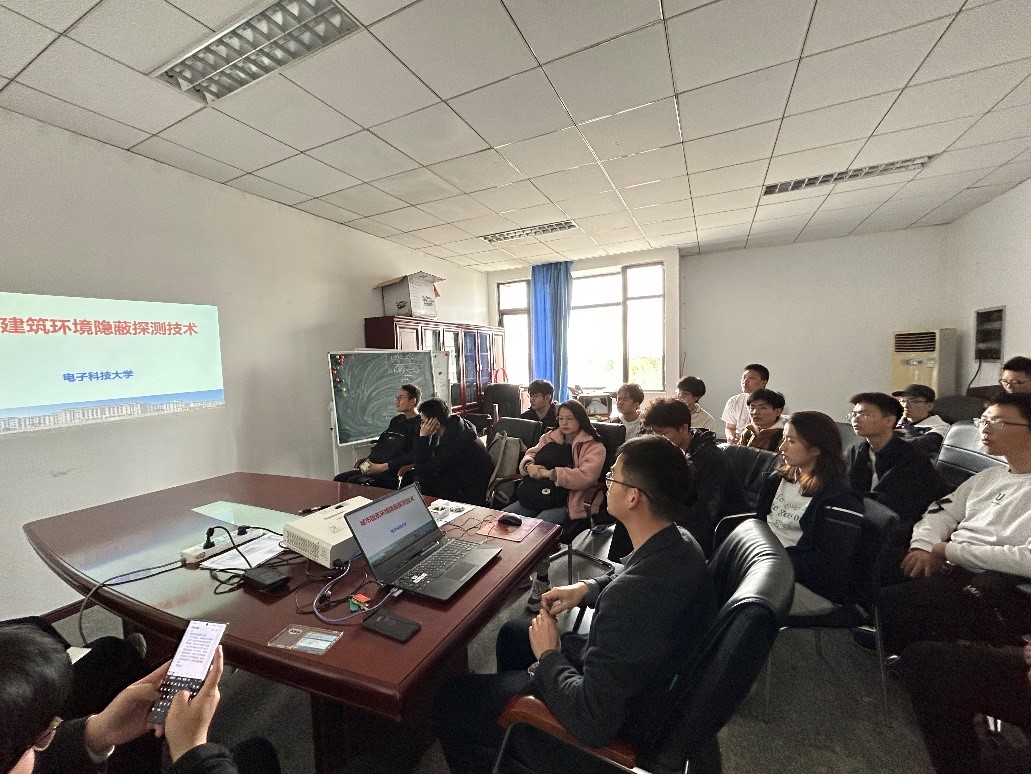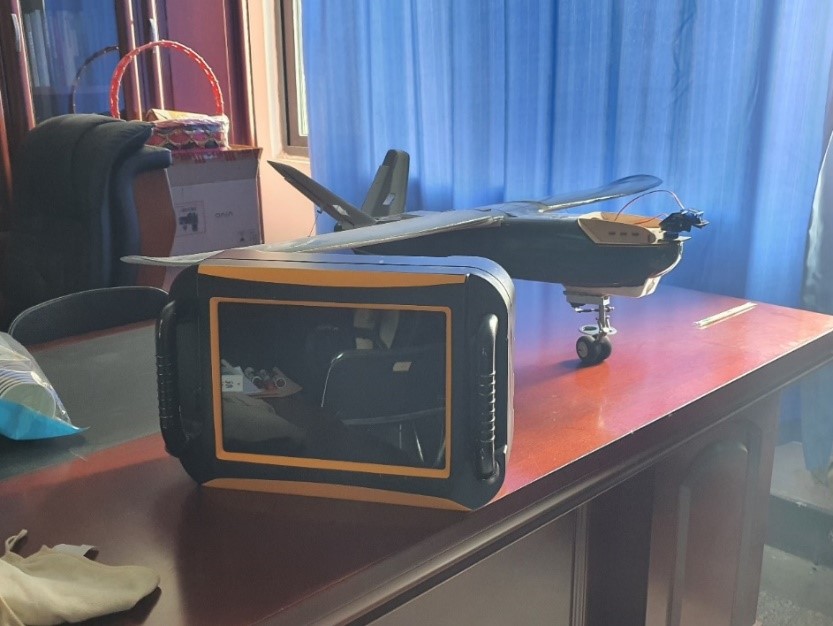The Sixteenth Dive into Research: Learning the Research Progress of Radar Target Detection in the Heterogeneous Environment
At the noon on March 16, the sixteenth Dive into Research of Glasgow College, UESTC was successfully held in the School of Information and Communication Engineering, UESTC. Professor Guo Shisheng from the School of Information and Communication Engineering (ICT) was invited to introduce the progress of the research group of radar target detection in the heterogeneous environment in the fields of penetrating detection, multipath detection and millimeter-wave radar signal processing.

The theme of his introduction was the detection technology of hidden non-line-of-sight targets in buildings. At the beginning of the activity, Mr.Guo introduced four aspects involved in his talk, namely, concepts, penetrating detection, CT-like detection, and multipath detection. In order to let everyone understand the connotation of detection technology, Mr. Guo demonstrated the significant role of wall penetrating radar in counter-terrorism by presenting a video from the movie Operation Red Sea.

Mr. Guo explained the working principle of penetrating detection, and showed the iterative history and branches of ICT's wall penetrating radar products, visually presenting his team's achievements in the field. During the introduction, audience learned about the practical applications of low-frequency microwave wall penetration radar and deepened their understanding of penetrating detection.
Immediately afterwards, Mr. Guo raised a question regarding whether Wi-Fi could be used for detection and perception in addition to infinite propagation, encouraging audience to think. Previous studies have found that for CT-like detection technologies, based on previous experimental findings, the more scanning paths, the better the imaging obtained; the more maximum information entropy scanning paths, the clearer the imaging, based on a certain number of scanning paths. Mr. Guo then used the example of "ghost probes" in traffic accidents to illustrate the urgent need for radar detection of objects beyond the visual range, and also explained the difficulties in multipath detection and some countermeasures from the perspective of electromagnetic wave propagation principles.

At the end of the activity, Mr. Guo introduced the application of millimeter-wave radar for the students, including but not limited to smart home, fall detection, detection of breathing and heartbeat, detection of sleep quality and CPD (Child Presence Detection), many of which had been implemented under the joint efforts of the team. However, millimeter-wave radar is not perfect either. Although it has the advantages of low cost, 24-hour and all-weather working ability and high stability, there are still many cases of ideal points, which are still difficulties to be overcome in current stage.

Mr. Guo answered the questions from students and gave many constructive suggestions, sharing valuable experience with students and encouraging them to actively participate in the scientific research of millimeter-wave radar.
Dive into Research-- Introduction:
In order to stimulate students' interest in scientific research and cultivate their innovative and practical ability, Glasgow College Student Affairs Centre (Practical Teaching) and the Innovation Science Association jointly launched a series of "Dive into Research" activities, which builds a bridge for students to get to know supervisors and their research teams closely. In each activity, professors from different research fields will be invited to introduce their scientific research projects, guide students to understand and find out their own interests, and open the gate to scientific research and innovation.
Translated by Nie Weiyan, Yang Jiahong, Zhang Yuexiang
Proofread by Emma, Yi Shuying







